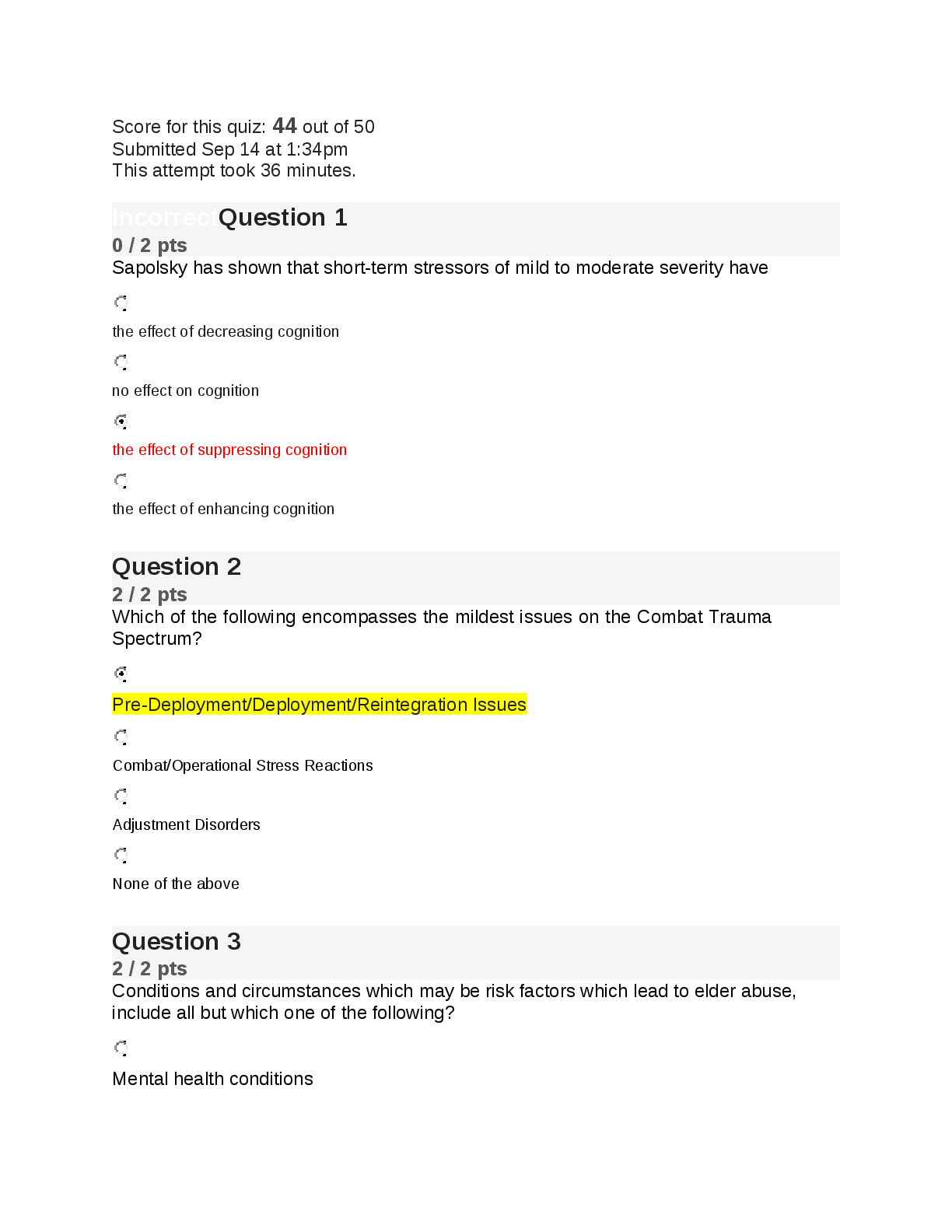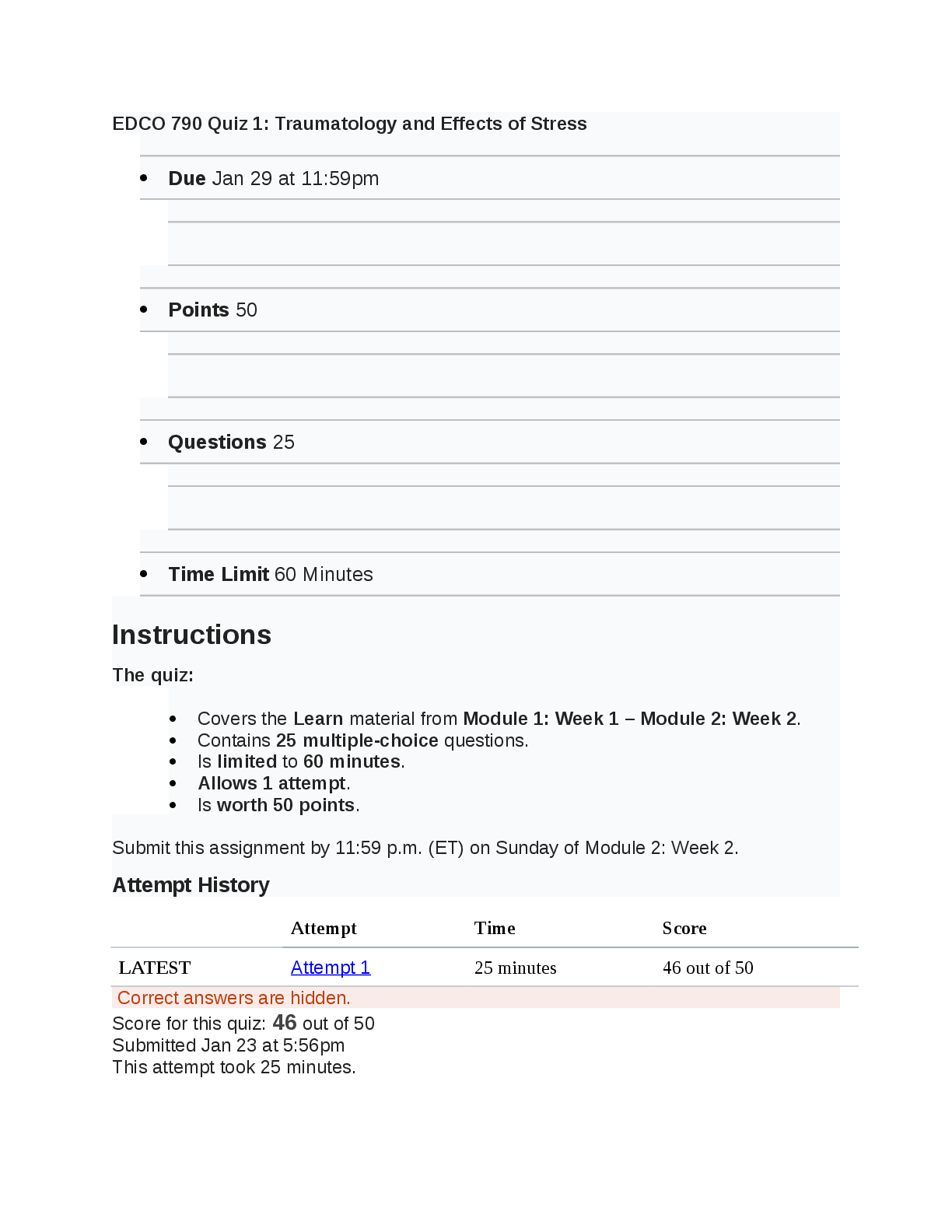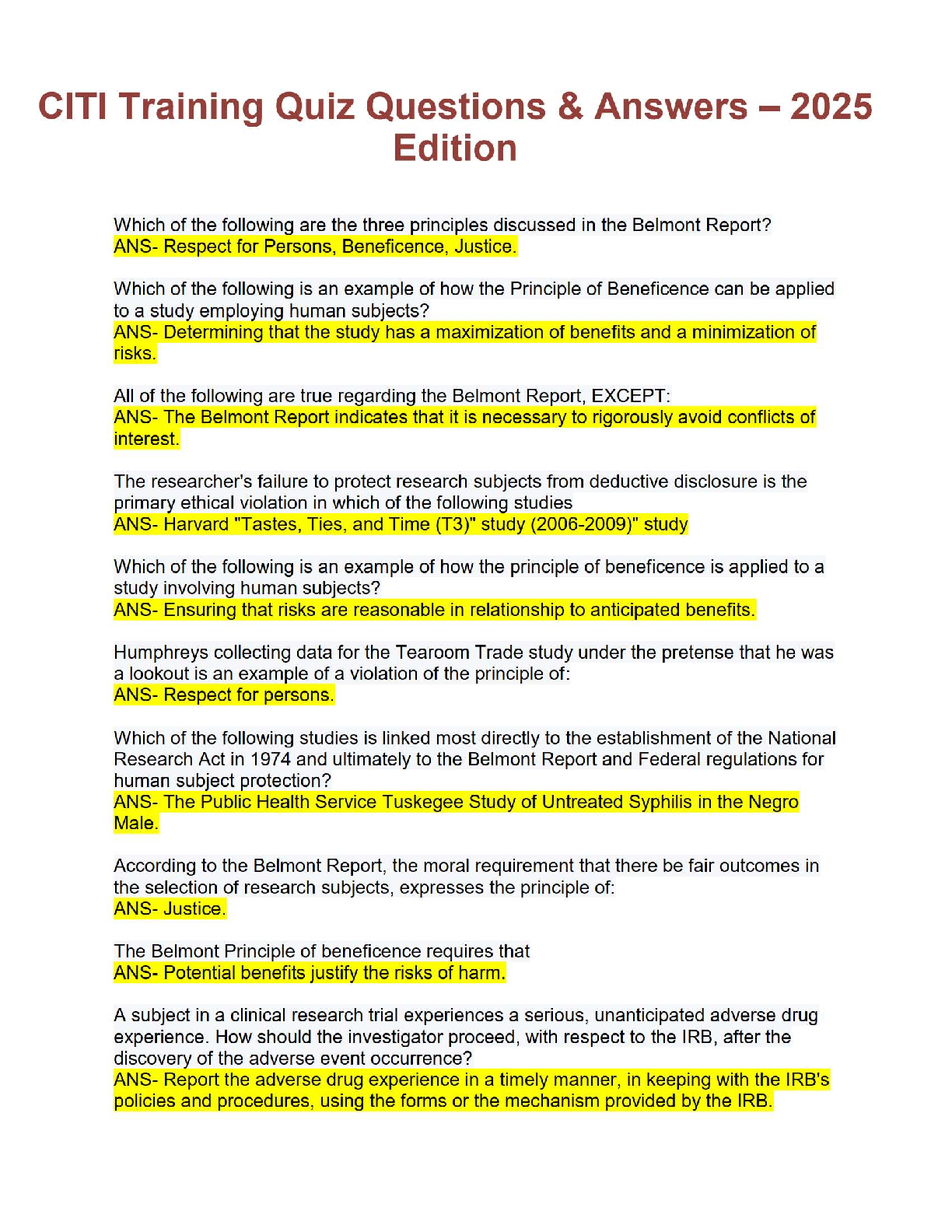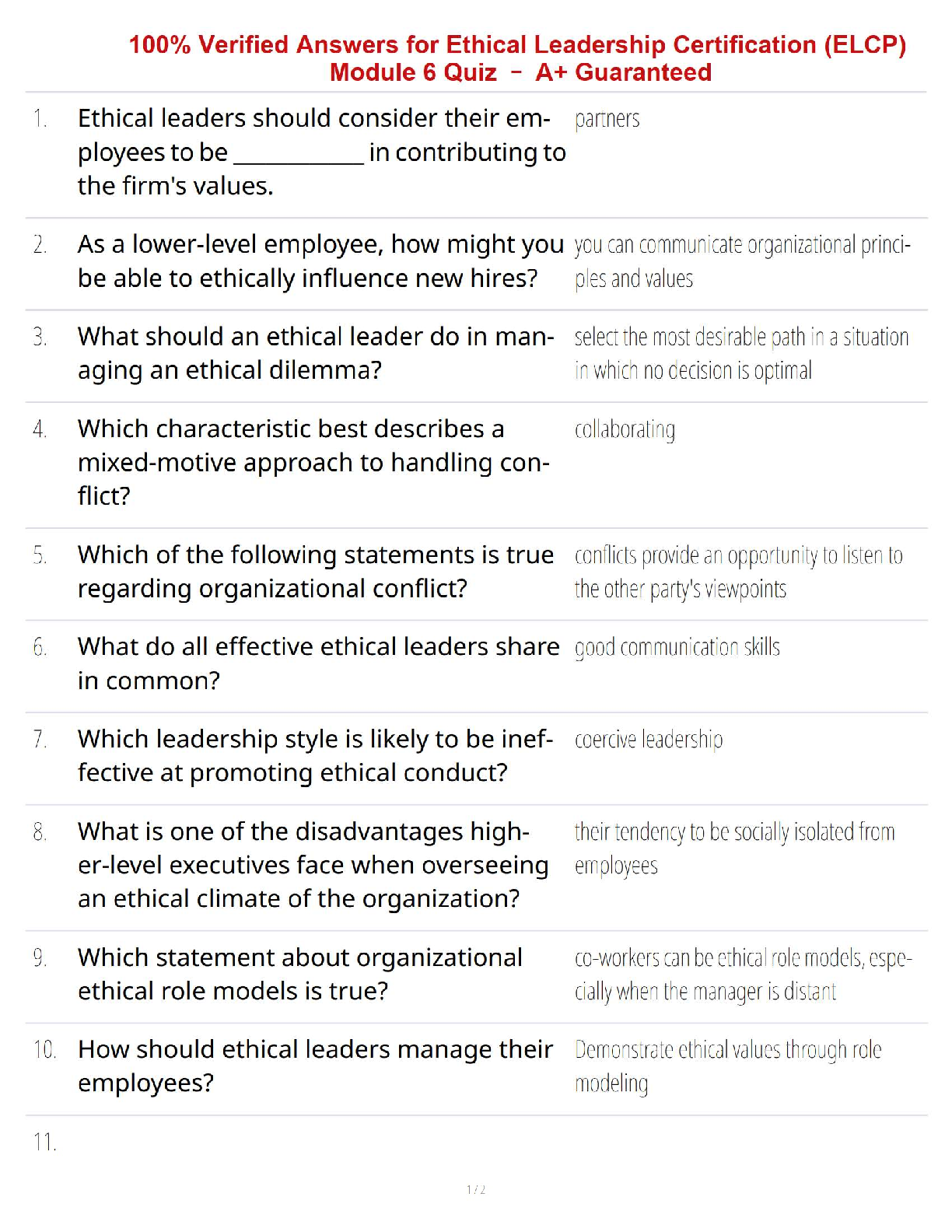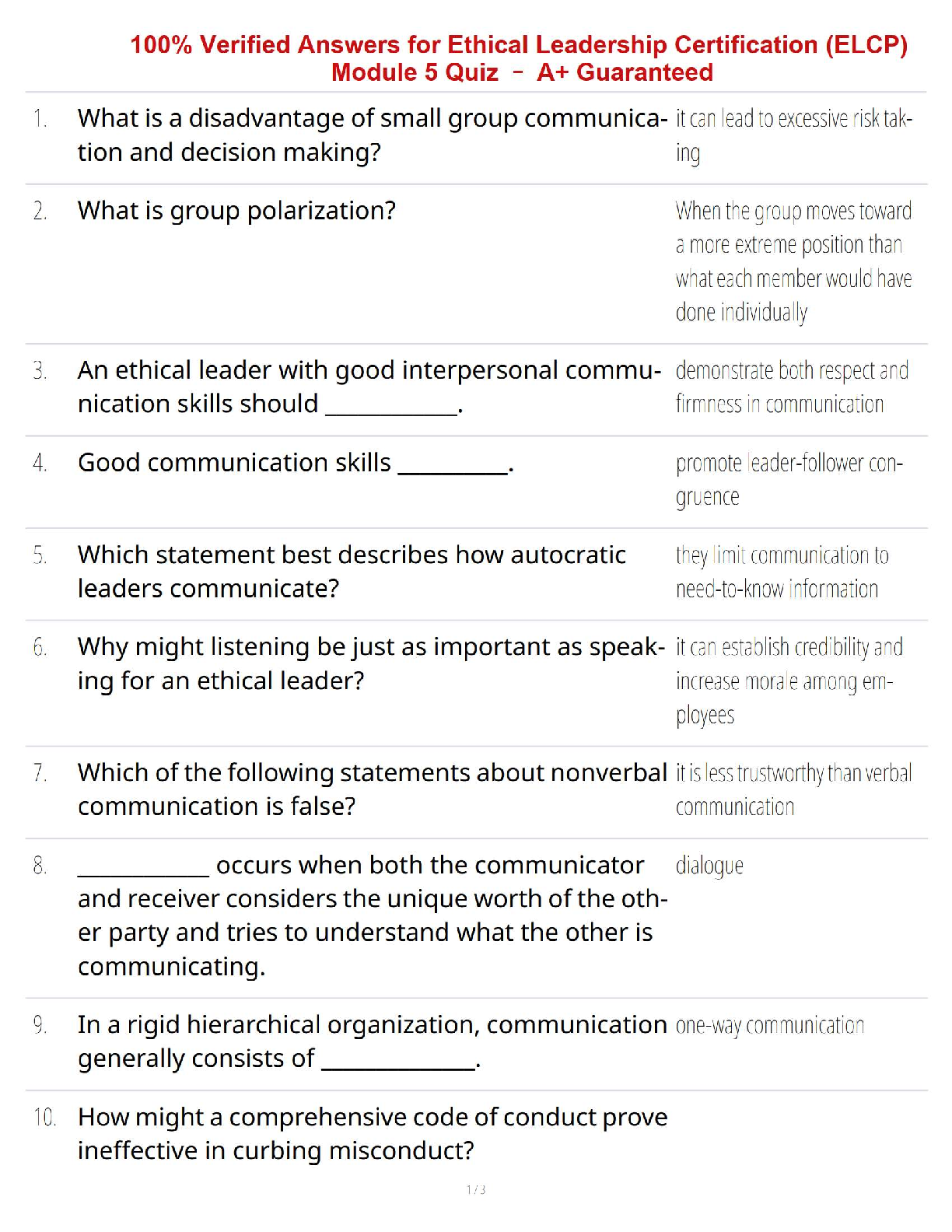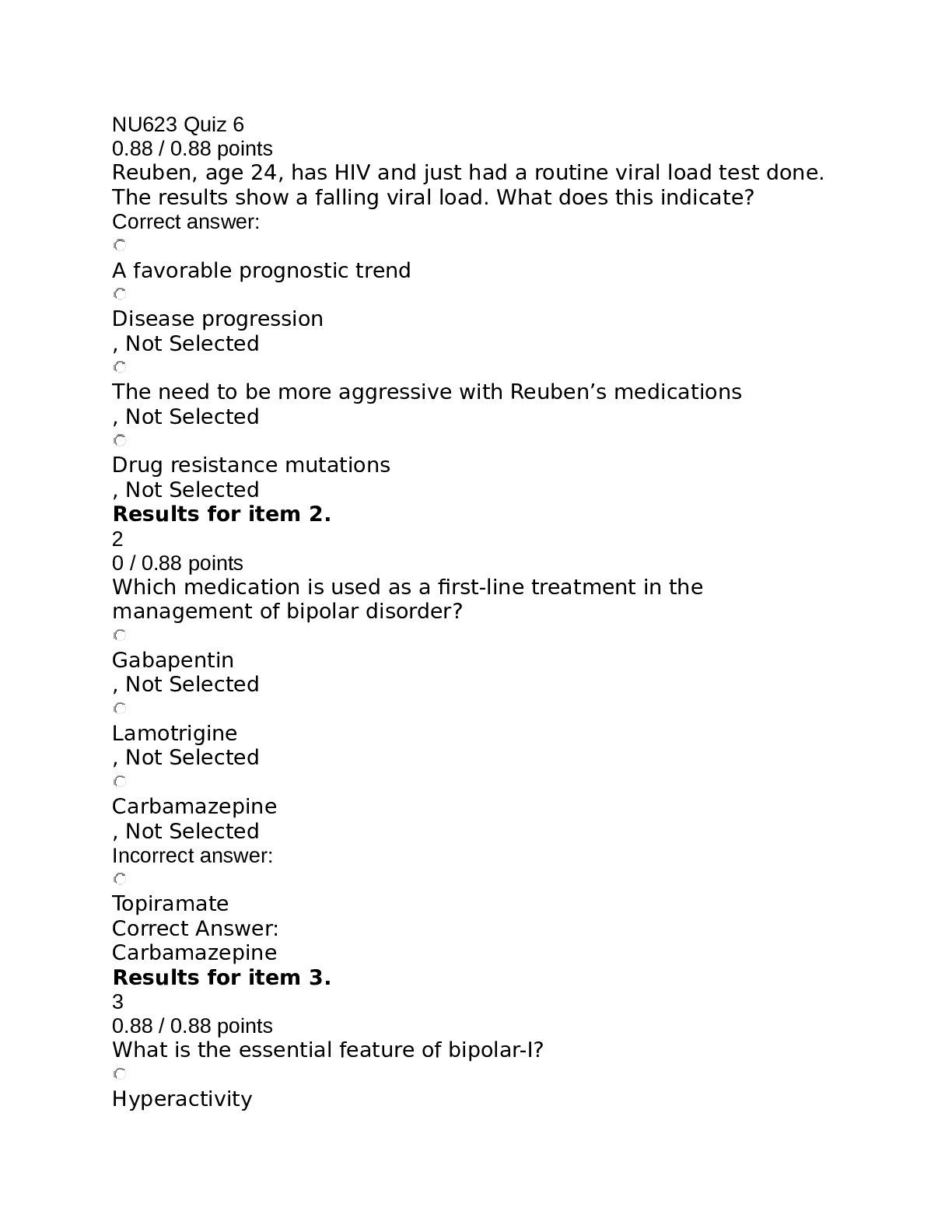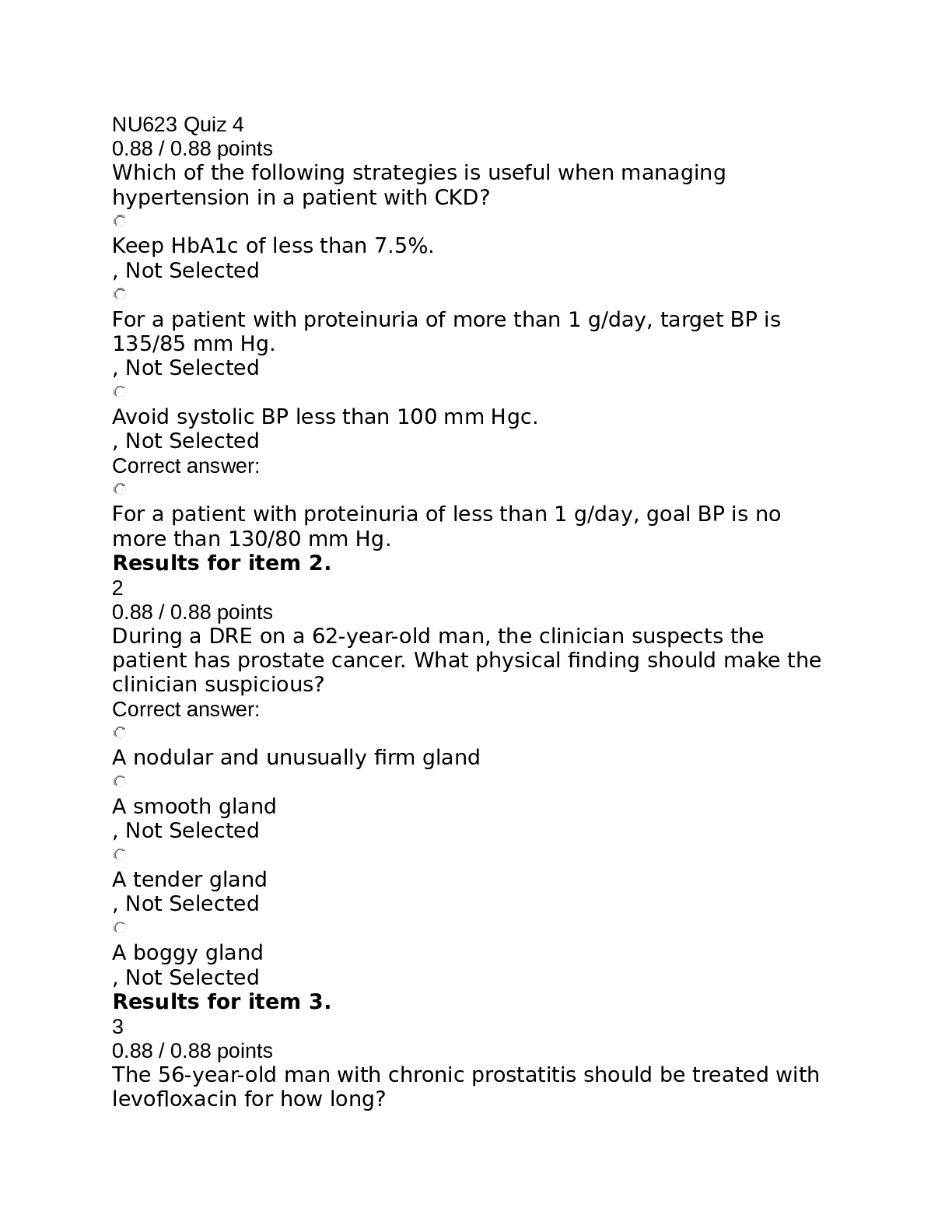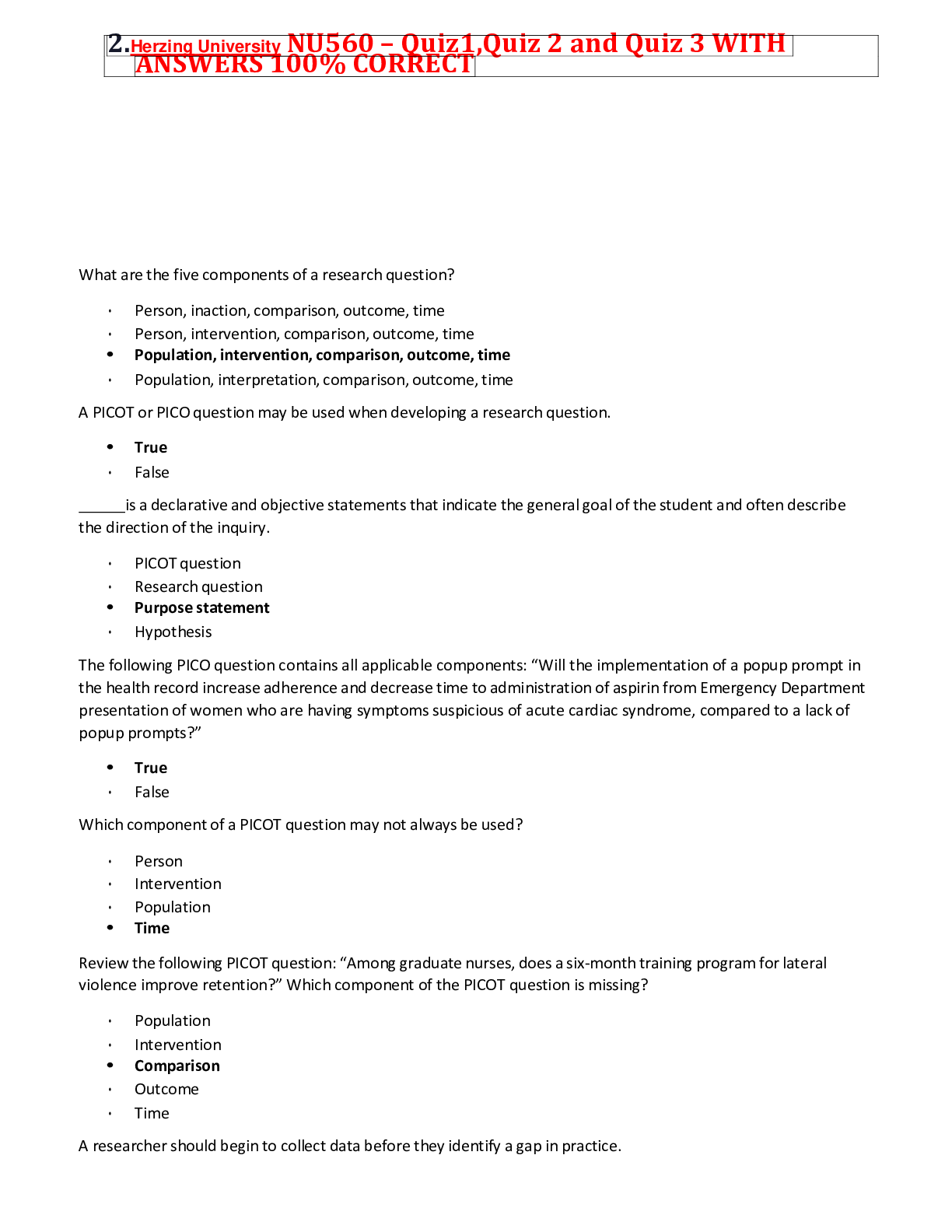Chapter 5 HW
Document Content and Description Below
1. The operating cycle of a merchandising company contains the following five activities. With merchandise acquisition as
the starting point, arrange the events in the correct order.
a. Inventory ma
...
de available for sale 2
b. Cash collections from customers 5
c. Credit sales to customers 3
d. Purchases of merchandise 1
e. Accounts receivable accounted for 4
2.
Apr. 2 Purchased merchandise from Lyon Company under the following terms: $4,600 price, invoice
dated April 2, credit terms of 2/15, n/60, and FOB shipping point.
3 Paid $300 for shipping charges on the April 2 purchase.
4 Returned to Lyon Company unacceptable merchandise that had an invoice price of $600.
17 Sent a check to Lyon Company for the April 2 purchase, net of the discount and the returned
merchandise.
18 Purchased merchandise from Frist Corp. under the following terms: $8,500 price, invoice
dated April 18, credit terms of 2/10, n/30, and FOB destination.
21 After negotiations, received from Frist a $1,100 allowance on the April 18 purchase.
28 Sent check to Frist paying for the April 18 purchase, net of the discount and allowance.
Prepare journal entries to record the above transactions for a retail store.
Assume a perpetual inventory system.
Date General Journal Debit Credit
April 02 Merchandise inventory 4,600
Accounts payable—
Lyon 4,600
April 03 Merchandise inventory 300
Cash 300
April 04 Accounts payable—Lyon 600
Merchandise inventory 600
April 17 Accounts payable—Lyon 4,000
Merchandise inventory 80
Cash 3,920
April 18 Merchandise inventory 8,500
Accounts payable—
First 8,500
April 21 Accounts payable—Frist 1,100
Merchandise inventory 1,100
April 28 Accounts payable—Frist 7,400
Merchandise inventory 148
Cash 7,252
Explanation:
Apr 17: Paid balance (less 2%) within discount period = $80 = ($4,600 − $600) × 2%.
This study source was downloaded by 100000849331226 from CourseHero.com on 07-04-2022 16:44:25 GMT -05:00
https://www.coursehero.com/file/10100301/Fundamental-Accounting-Principles-21st-Ed-Chapter-5-Connect-Problems/Apr 28: Paid balance (less 2%) within discount period = $148 = ($8,500 − $1,100) × 2%
3.
Allied Parts was organized on May 1, 2013, and made its first purchase of merchandise on May 3. The
purchase was for 2,000 units at a price of $10 per unit. On May 5, Allied Parts sold 1,500 of the units for
$14 per unit to Baker Co. Terms of the sale were 2/10, n/60.
a. On May 7, Baker returns 200 units because they did not fit the customer's needs. Allied Parts restores
the units to its inventory.
b. On May 8, Baker discovers that 300 units are damaged but are still of some use and, therefore, keeps
the units. Allied Parts sends Baker a credit memorandum for $600 to compensate for the damage.
c. On May 15, Baker discovers that 100 units are the wrong color. Baker keeps 60 of these units
because Allied Parts sends a $120 credit memorandum to compensate. Baker returns the remaining
40 units to Allied Parts. Allied Parts restores the 40 returned units to its inventory.
Prepare entries for Allied Parts to record the May 5 sale and each of the above separate transactions a through c
using a perpetual inventory system.
Date General Journal Debit Credit
May 05 Accounts receivable 21,000
Sales 21,000
May 05 Cost of goods sold 15,000
Merchandise inventory 15,000
May 07 Sales returns and allowances 2,800
Accounts receivable 2,800
May 07 Merchandise inventory 2,000
Cost of goods sold 2,000
May 08 Sales returns and allowances 600
Accounts receivable 600
May 15 Sales returns and allowances 680
Accounts receivable 680
May 15 Merchandise inventory 400
Cost of goods sold 400
Explanation:
May 5: Sold merchandise on credit (1,500 × $14) = $21,000
May 5: To record cost of sale (1,500 × $10) = $15,000
May 7: Accepted a return from a customer (200 × $14) = $2,800
May 7: Returned merchandise to inventory (200 × $10) = $2,000
May 15: Accepted a return from a customer [$120 + (40 × $14)] = $680
May 15: Returned merchandise to inventory (40 × $10) = $400
The following list includes selected permanent accounts and all of the temporary accounts from December 31,
2013, unadjusted the trial balance of Emiko Co., a business owned by Kumi Emiko. Emiko Co. uses a perpetual inventory
system.
Debit Credit
Merchandise inventory $ 30,000
Prepaid selling expenses of 5,600
K. Emiko, Withdrawals 33,000
Sales $529,000
Sales returns and allowances 17,500
Sales discounts 5,000
Cost of goods sold 212,000
Sales salaries expense 48,000
Utilities expense 15,000
Selling expenses 36,000
Administrative expenses 105,000
[Show More]
Last updated: 3 years ago
Preview 1 out of 5 pages
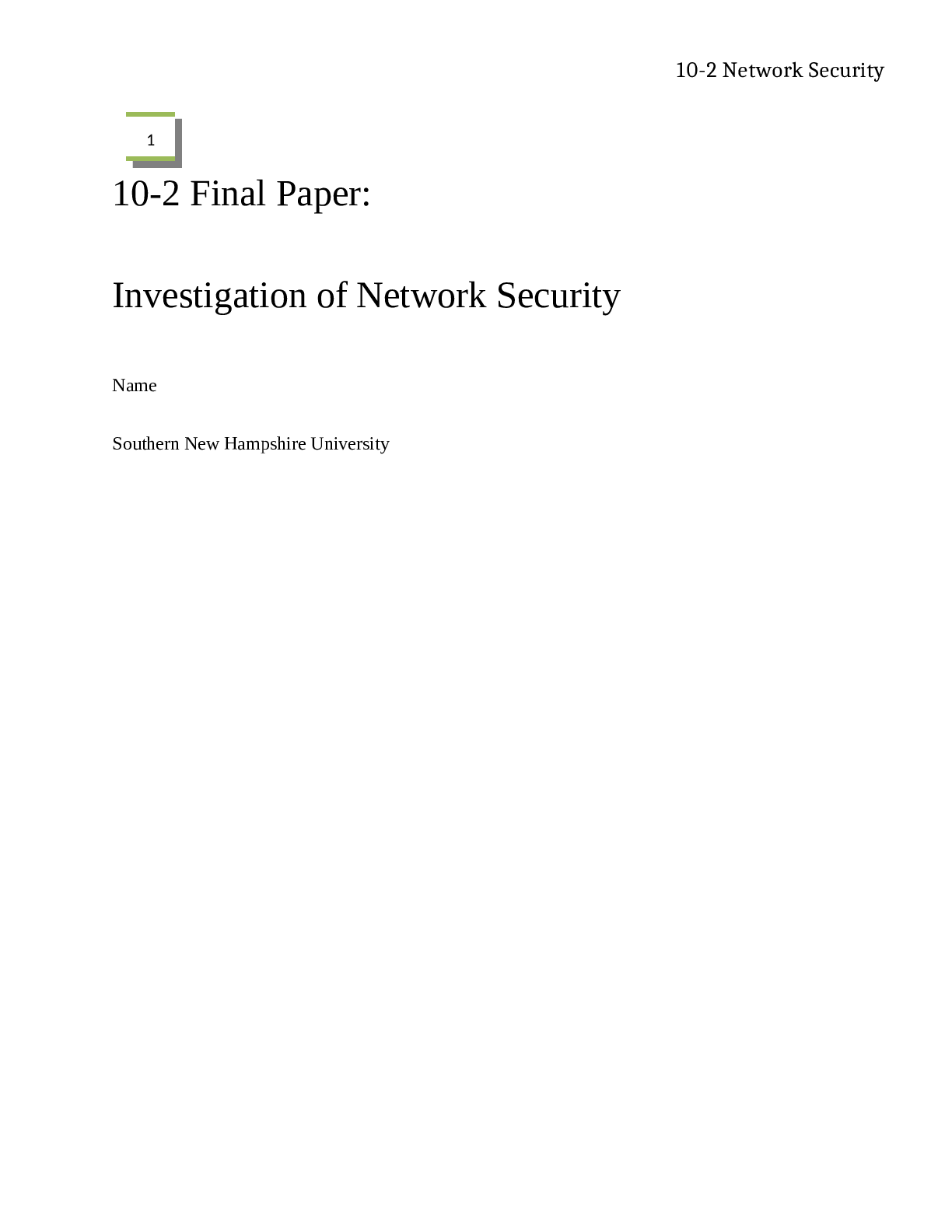





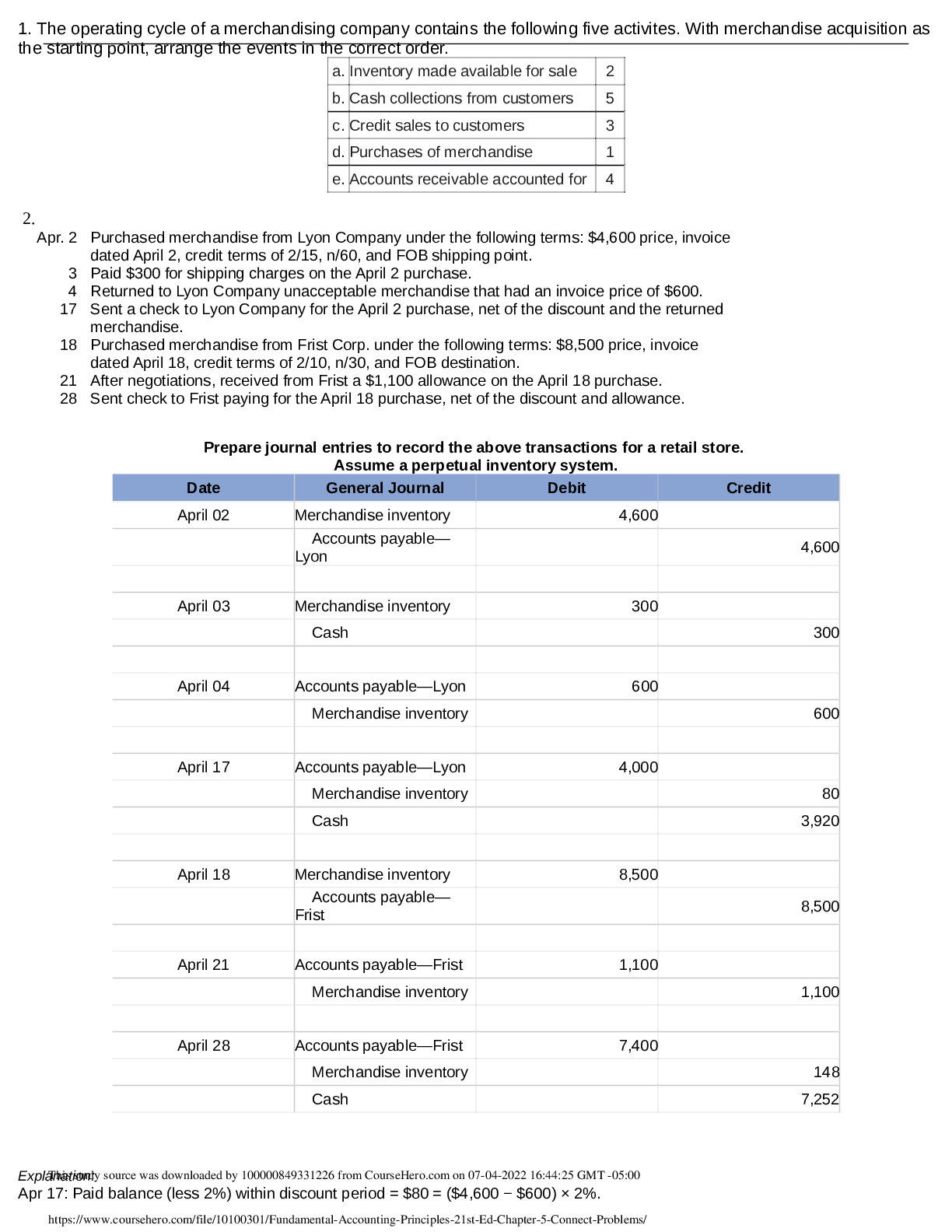



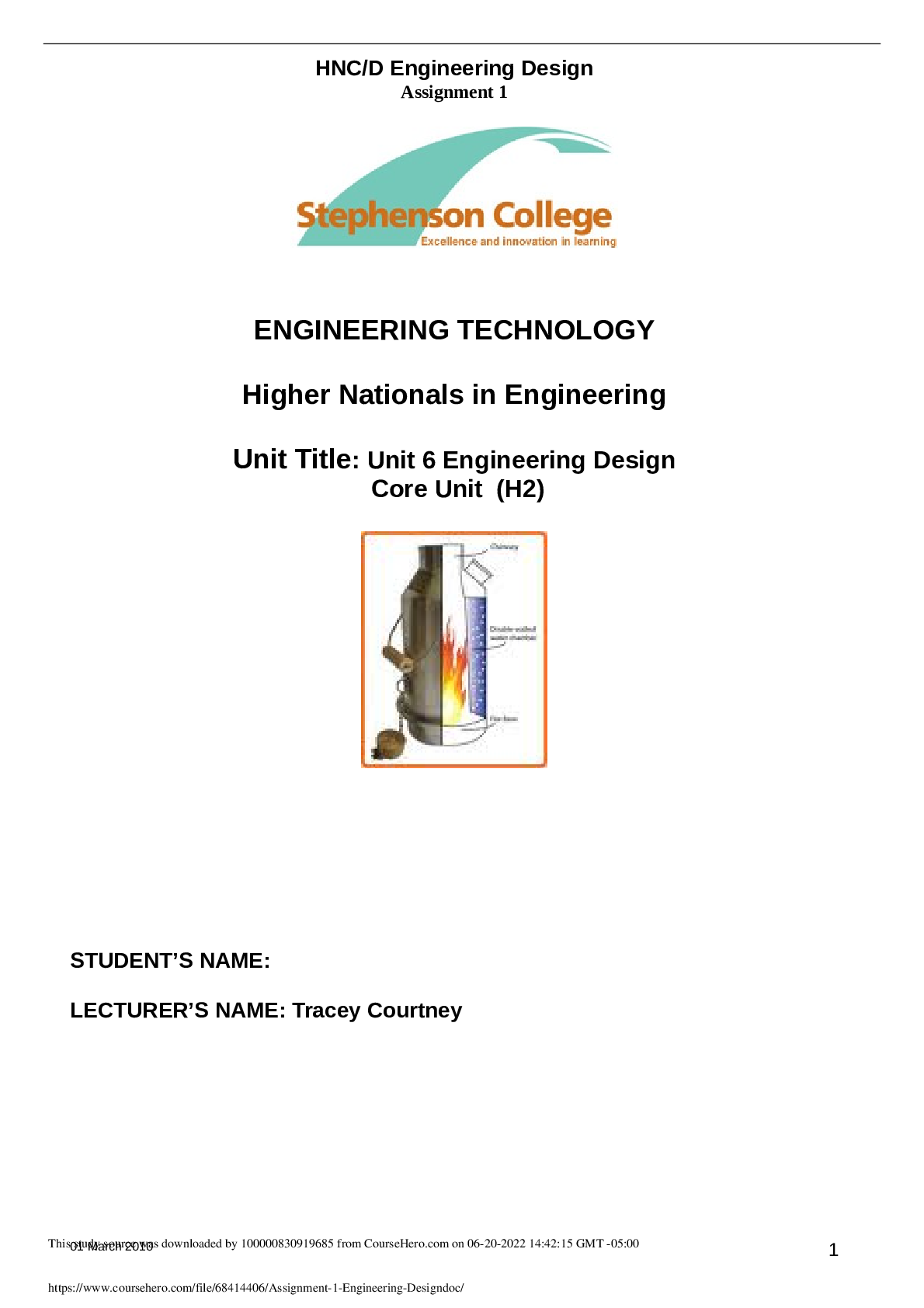




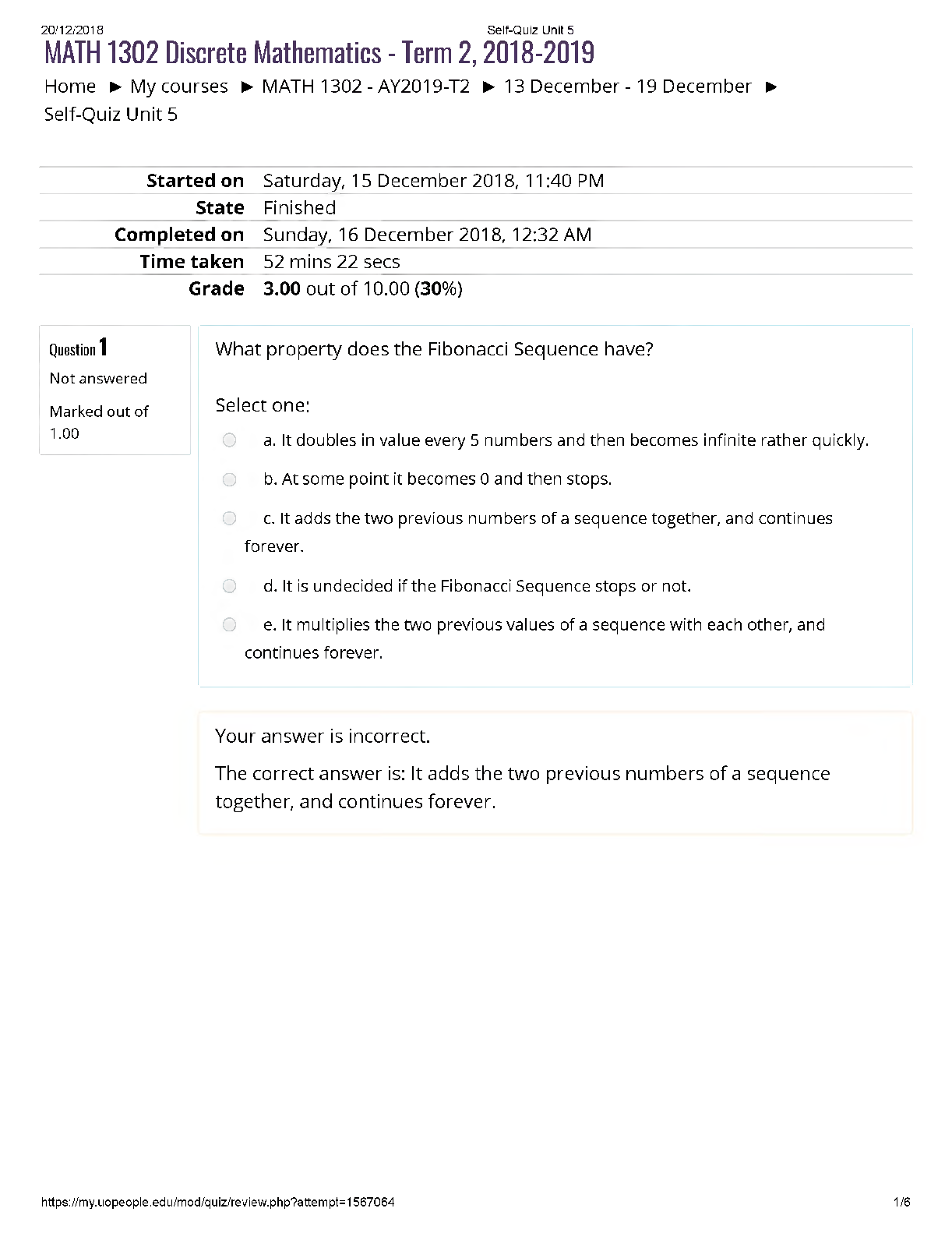

.png)


